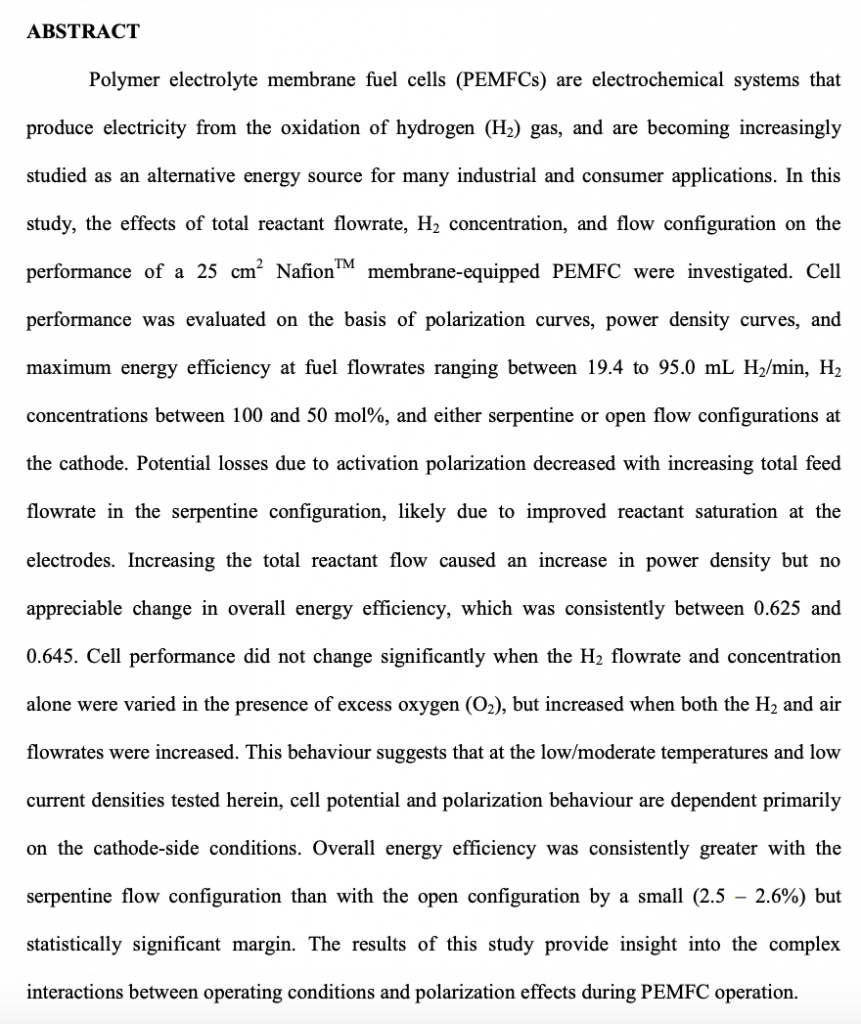CHG4116 Fuel Cells Lab Report
Summary:
Polymer electrolyte membrane fuel cells (PEMFCs) are electrochemical systems that produce electricity from hydrogen (H2) gas oxidation and are becoming increasingly studied as an alternative energy source for many industrial and consumer applications. This study investigated the effects of total reactant flow rate, H2 concentration, and flow configuration on the performance of a 25 cm2 NafionTM membrane-equipped PEMFC. Cell performance was evaluated based on polarization, power density curves, and maximum energy efficiency at fuel flow rates ranging between 19.4 to 95.0 mL H2/min, H2 concentrations between 100 and 50 mol%, and serpentine or open flow configurations at the cathode. Potential losses from activation polarization decreased with increasing total feed flow rate in the serpentine configuration, likely due to improved reactant saturation at the electrodes. Increasing the total reactant flow caused an increase in power density but no appreciable change in overall energy efficiency, which was consistently between 0.625 and 0.645. Cell performance did not change significantly when the H2 flow rate and concentration alone were varied in the presence of excess oxygen (O2), but increased when both the H2 and air flow rates were increased. This behaviour suggests that cell potential and polarisation behaviour depend primarily on the cathode-side conditions at the low/moderate temperatures and low current densities tested herein.
Excerpt:
CHG4116 Fuel Cells Lab Report
CHG 4116 – Chemical Engineering Laboratory – Fuel Cells
The effect of reactant flowrate, hydrogen concentration, and flow configuration on the performance of a polymer electrolyte membrane fuel cell
ABSTRACT
Polymer electrolyte membrane fuel cells (PEMFCs) are electrochemical systems that produce electricity from hydrogen (H2) gas oxidation and are becoming increasingly studied as an alternative energy source for many industrial and consumer applications. This study investigated the effects of total reactant flow rate, H2 concentration, and flow configuration on the performance of a 25 cm2 NafionTM membrane-equipped PEMFC. Cell performance was evaluated based on polarization, power density curves, and maximum energy efficiency at fuel flow rates ranging between 19.4 to 95.0 mL H2/min, H2 concentrations between 100 and 50 mol%, and serpentine or open flow configurations at the cathode.


Reviews